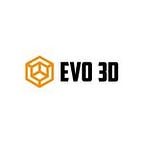Nowadays, schools are looking for ways to get creative with teaching. If students feel bored with the teaching style and methods, teachers should devise ways to spice things up and make learning fun and interactive. Using technology in teaching has far-reaching benefits, and more educators are now adding 3D printing to their curriculum.
The invention of the industrial FDM printer was a pathbreaking event for individuals looking to manufacture items easily. But now even using 3D printing in education offers ample opportunity to students. Leveraging 3D printing to excel with passion can lead to growth and development for future designers and engineers. With the huge reduction in the cost of 3D printers, it has become the most important educational tool. Here are the benefits of choosing a 3D printer for education:
Educate Students to Experiment
Experimental thinking is centered on developing practical solutions by identifying the source of the issue and refining prototypes to address it.
With 3D printing technology, students may repeat, prototype, and test their solutions in the real world. Students gain from understanding that it’s okay to make mistakes on your first try and can use those mistakes to improve their designs by debugging. Gaining confidence and endurance in problem-solving is an essential life skill, that comes from becoming familiar with this repeated process.
Students who get to experiment can become tomorrow’s leaders by developing the abilities needed to address challenges in the real world.
Building Strong Ties in School
Create connections between students from various grade levels by pairing them up to work on a 3D printing challenge together, as one Australian school did, or use 3D printing to generate money for a nearby hospital, as one Canadian school did. An incredible effort was accomplished by 840 members of the community at a remote school that designed and 3D printed individual blocks that made up the school sculpture. A fun, all-school 3D printing competition is a fantastic way to boost school spirit.
Develop Future Leaders
When students utilize a 3D printer, they are vying to become future leaders. They can make something themselves rather than purchase it!
A great way to encourage young inventors to start the creative process is by introducing them to a 3D printer. Conceptualizing designs, innovating, and iterating until the best answer has been identified is faster than before.
Giving students the proper skills, resources, and direction gives them the confidence they need to develop a solution based on a recognized need. Students can develop a prototype, design it, and iterate until the answer works, much like design thinking, which teaches them important critical thinking skills through trial and error.
Promotes Creativity
With 3D printing, students have a chance to take things in stride and foster their creativity. Students can now test out different materials to see what happens with equipment like filament extruders. Unexpected achievements and failures may emerge from this. Both of these may support a student’s development when they master a specific topic or subject.
Develop Problem-Solving and Analytical Thinking
The development of 3D printing was extremely innovative and gave both businesses and individuals a simple way to produce goods quickly and affordably. The use of 3D printing in education provides students with countless learning possibilities across a variety of subjects.
In math and engineering studies, students frequently ponder whether or not a certain equation will be useful.
In 3D printing, an object must first be designed in a CAD program of some kind. To better grasp their project, this frequently calls for the inclusion of STEAM courses. Because 3D printing is interactive, it forces students to apply what they’ve learned in math, engineering, or other relevant fields to a project as they go and solve problems along the way. To have a better knowledge of a topic as a whole, students may choose to reproduce a problem or project that they are currently working on.
The possibilities for advantages seem limitless, and depending on how you incorporate them into schooling, some will be more fruitful than others.
Expose Yourself to Different Learning Styles
3D printer for education helps students get exposed to different learning preferences through instructional strategies. Visual and linguistic learners are two kinds of learners that can gain a lot from 3D printing in education.
Visual learners gain from seeing a model, concept, or solution in the real world rather than merely in a textbook by adding 3D printing to a lesson plan. Visual learners can examine the print from all sides, strengthening their comprehension and enhancing learning outcomes, whether it’s a 3D-printed model of the human heart or a miniature reproduction of a historical structure.
Would you like to attempt to damage a PEEK component? Since it is renowned for its remarkable chemical resistance to a wide range of organic and inorganic compounds as well as its exceptional resistance to hydrolysis in hot water, that would not be a simple task.
PEEK is essentially insoluble in all major solvents at ambient temperature, with the exception of a few potent acids like hydrofluoric acid and sulphuric acid (95% concentration).
The only polymer that does not absorb any water is PTFE, however, there are several others, including PEEK, PEI (Ultem®), PP, PPS, PSU, PPSU, PVDF, PET, PPE, and PE. PC, ABS, PA12, and POM are among the polymers with a low water absorption rate.
